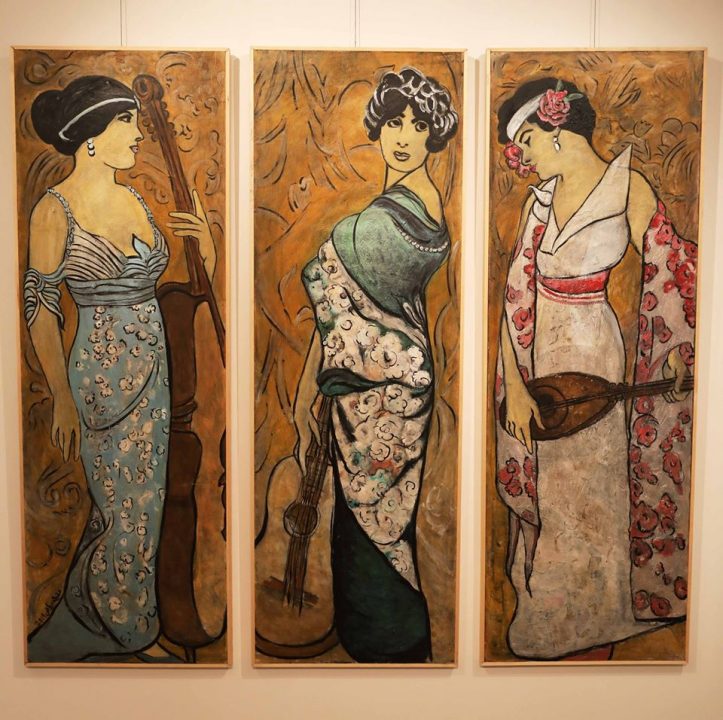“I’m always nostalgic of the world where classiness was the main theme, love was the dominating feeling among people, and ethics were the leading soft power. That is the society Egypt was in its best shape, and that is the life I always resemble in my art work,” with a calm and assuring voice, artist Akila Riad started her talk about her last exhibition, Elah Al-Hob (The God of Love), that opened 12 January.
The life Riad portrayed in her latest exhibitions, taking place at Zamalek’s Nile Art Gallery, is not that far away from the nowadays people’s recognition. For those who have not lived it personally, they must have seen in in the black and white films, where ladies always wore flowy dresses, and men looked most elegant in their everyday suits.
The God of Love takes visitors back in time to the 1940s and 1960s, as people find themselves surrounded by nothing but women wearing their retro dresses, swaying with their loved ones to the rhythms of a live band.
At what seems to be a casino, all of the exhibition’s portraits feature a different story about one of the attendees.
In her third exhibition, Riad depicts the era she sees herself lucky enough to be born in, yet doomed enough to also witness it fading.
“This is the world [to which] I opened my eyes,” Riad said in a nostalgic tone, “a classy world with elegant people and classy surroundings. It is the furthest to where we currently stand, where we face ugliness, cruelty, and visual population every day.”
The veteran artist’s drawing style has always followed the path of nostalgia and portraying “the once glorious era of Egypt.”
In her third exhibition, Riads tells the stories of the people who lived in the 1950s, featuring them in her paintings, reflecting their feelings, thoughts and even hobbies.
“I’m always attached to this era, feeling that I belong to it more than any other period of time,” she stated.
Surrounded by the warm giant portraits, one could not fight the invading nostalgic feeling that captures the soul, seeing nothing but cosiness among the figures.
Riad believes that the modernist state Egypt lived for decades ended at the 23 July revolution. After which, all of the decency the country faded away over dozens of years.
“Those who lived through the hump we went through, from the elegance of last century and the bleakness of this one, realise the jump we lived throughout, and can personally relate to what I portray,” she explained.
In her exhibition, Riad presents Egypt as the main female figure in each painting, where visitors “can see how classy Egypt used to be, sensing the difference from the status quo.”
“I opened my eyes seeing my hometown, Alexandria, a cosmopolitan city, where people were close to each other despite economic differences. Most of us went to the same places and shared the same features of life. This is the life I highlight in my painting,” Riad added.
Music is the main theme of the God of Love exhibition. The 23 large portraits, sing out loud the classical musicals, mainly played by the figures.
For over a year and half, the artist disconnected herself from the world, focusing only on the golden era, featuring its beauty and decency.
“I surrounded myself buy nothing except 1950s music, films, and art. It was like traveling back to a time I love the most and representing it in a modern way,” she explained.
“This exhibition is my leap of faith, that people might also miss this world and start returning to it,” she concluded.
The exhibition runs until 23 January.
















